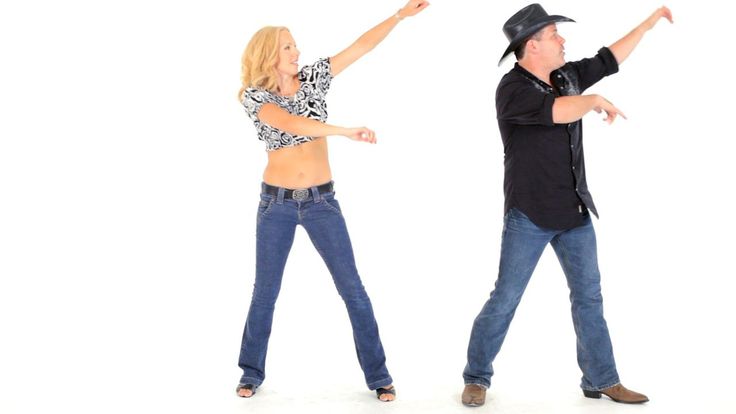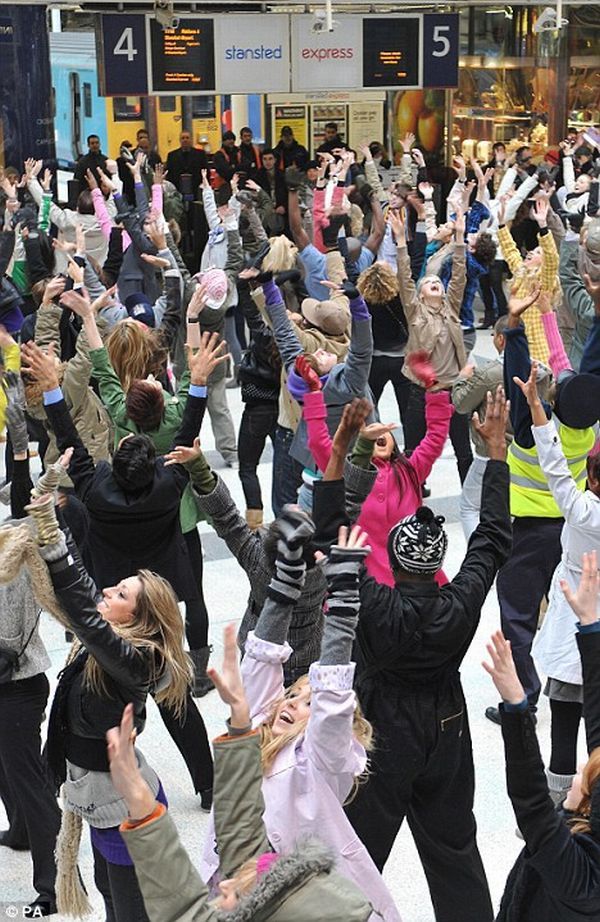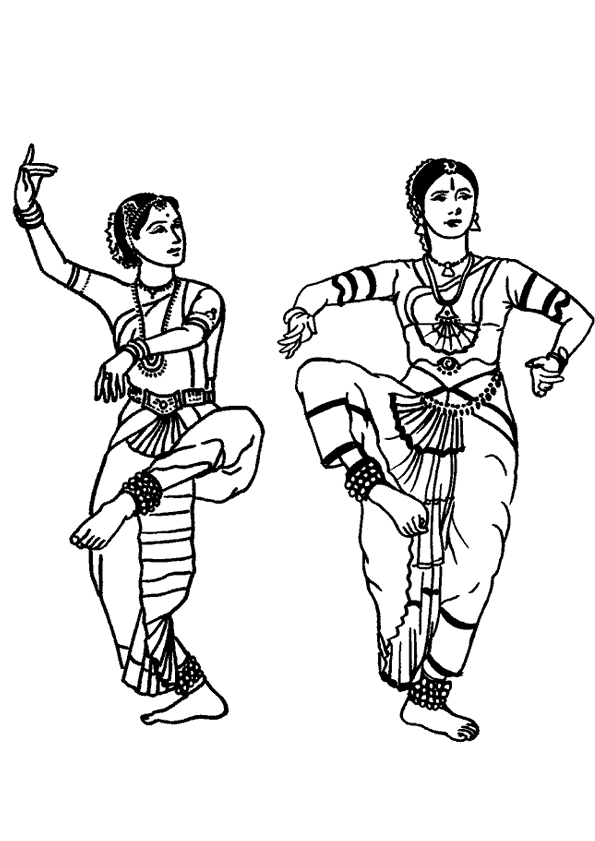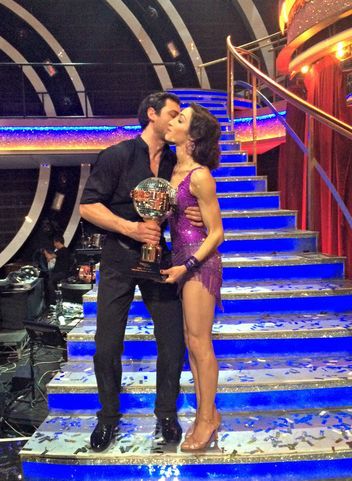How to dance rumba
Learn Basic Rumba Steps
Rumba, or sometimes 'rhumba', is a slow and flirtatious dance. Some say it is the spirit and soul of Latin American dance. It's certainly a dance of romance and always a good choice for weddings.
- Basic steps
- Instructions & Diagrams
- Video
- Recommended Video Lessons »
Quick intro
Rumba is generally regarded as the "dance of romance", but also known as the "Latin waltz" or the "waltz with a wiggle". Due to its slow rhythm and sensual movements, some call it the most intimate and passionate dance there is.
Learning rumba is not difficult. The ease of learning is actually one of the main reasons why it's more popular today than most other Latin dances (except perhaps salsa). Once you learn the simple steps, the music does the rest.
Rumba can be danced to a variety of music, from contemporary to traditional. Here are a few popular songs to give you an idea:
- And I Love Her - The Beetles
- It's Now or Never - Elvis Presley
- I'm Not Giving You Up - Gloria Estefan
- Besame Mucho - Xavier Cugat
- Falling Into You - Celine Dion
- Neon Moon - Brooks and Dunn
- Under the Boardwalk - The Drifters
- Kokomo - Beach Boys
- Girl from Ipanema - Frank Sinatra
Basic steps
Rumba is usually danced to music written in 4/4 time, with four beats to each measure. The basic step is a very simple box step. It consist of three basic steps - two quick side steps and a slow forward or backward step.
The rhythm of the steps is slow, quick, quick. A slow step is danced over two counts of music, while a quick step is danced over one count.
Rumba is a spot dance which means the couple does not travel around the dance floor like in many other dances, but rather stays in one location. It is done to music with slow tempo and emphasizes on hip movements (what we call Cuban motion).
It is done to music with slow tempo and emphasizes on hip movements (what we call Cuban motion).
Instructions & Diagrams:
You start dancing in a closed dance position. The man's left hand is holding the lady's right hand with the elbows almost touching. The man's right hand is placed underneath the lady's shoulder blade. The lady's left hand is placed right behind the man's shoulder, flat on his back.
Basic Steps for Men
The gentleman starts with his left foot stepping forward. The man's steps are as follows:
- Step forward with your left foot
- Sidestep to the right with your right foot
- Move your left foot to your right foot
- Step back with your right foot
- Sidestep to the left with your left foot
- Move your right foot to your left foot
Basic Steps for Women
The lady starts with her right foot stepping backward.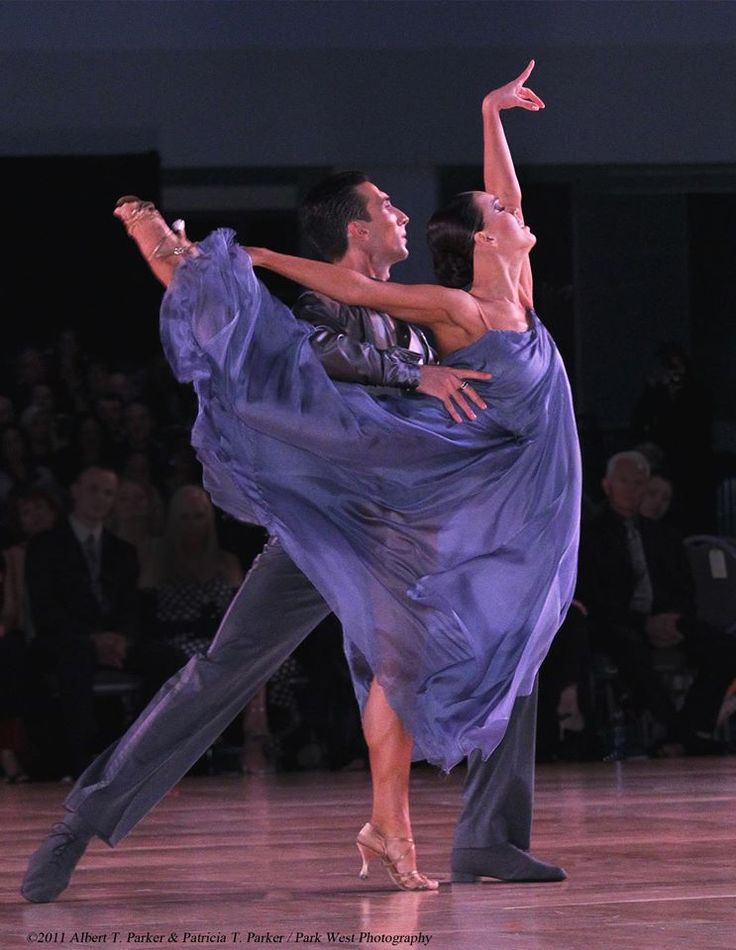 The woman's steps are as follows:
The woman's steps are as follows:
- Step back with your right foot
- Sidestep to the left with your left foot
- Move your right foot to your left foot
- Step forward with your left foot
- Sidestep to the right with your right foot
- Move your left foot to your right foot
Video
OK, Leon and Kim will now show you how it all comes together. Don't forget to move your hips and when you're doing side steps first pull your leg in and then step to the side. The video will explain everything in detail:
more videos »
This was an introductory video lesson from Passion4Dancing online dance course. Here is why we recommend them.
Rumba | Bella Ballroom
The Rumba is considered to be one of the most beautiful Latin style dances, earning it’s nickname as “The Dance of Love.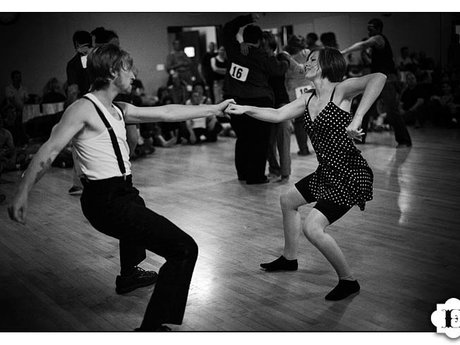 ” It is characterized by swaying hips, a still upper body, and close partner connections. Although it is traditionally danced to slow Latin music, it is now common to dance the Rumba to current, popular ballads. Because of this, the Rumba is a popular style choice for a wedding dance and slow partner dancing.
” It is characterized by swaying hips, a still upper body, and close partner connections. Although it is traditionally danced to slow Latin music, it is now common to dance the Rumba to current, popular ballads. Because of this, the Rumba is a popular style choice for a wedding dance and slow partner dancing.
History of the Rumba
Taking a look at the history of rumba dancing, one should know that the word “rumba” is used to describe different styles of dance. In one sense of the word, rumba can be used to encompass a variety of dances relating to the rumba genre of Afro-Cuban music. Theses island dances include Son, Danzon, Guagira, Guaracha, Nangino, Yambu, Colombia, and Guaguanco. In other contexts, rumba refers to the ballroom dance that occurs in social dance and international dance competitions. This ballroom style of rumba came from a Cuban rhythm dance called the bolero-son. The word “rumba” comes from the Spanish verb “rumbear” which means to go dancing, party and to have a good time.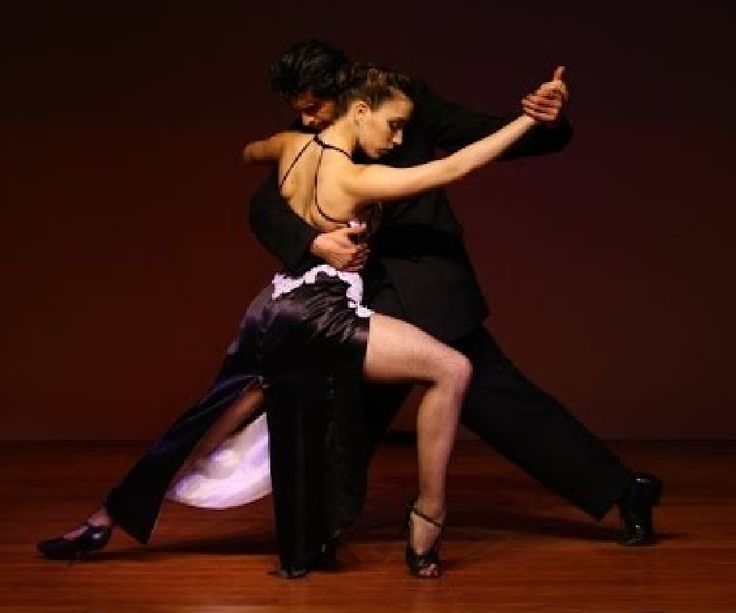
The dances associated with rumba stemmed from two prevalent sources. They were shaped by both Spanish and African influences. Cuba hosted Rumba dancing’s main growth and there were similar dance developments that took place in other Caribbean islands and throughout Latin America in general.
The Rumba originated among the African slaves in Cuba in the sixteenth century. It began as a fast and sensual dance with exaggerated hip movements. The dance was said to be representing the male pursuit of a woman and the music played with a staccato beat to keep time with the expressive movements of the dancers. The claves, the marimbola, the maracas and the drums were instruments used to inspire and accompany the dancers.
Up until the Second World War, the popular dance of middle class Cuba was the Son. The Son was a modified, slower, and more refined version of the native Rumba danced by the African slaves. The wealthy Cuban class danced an even slower version of dance in the rumba family called the Danzon. The Danzon had even smaller steps than the Son, and women’s hip movements were very subtle with tilting of their hips created by alternately bended and straightened knees.
The Danzon had even smaller steps than the Son, and women’s hip movements were very subtle with tilting of their hips created by alternately bended and straightened knees.
The Rumba came to the United States when Lew Quinn and Joan Sawyer tried to introduce the dance in 1913. It wasn’t until about ten years later that the dance started catching on. In the early 1920s, Rumba was danced slowly in America and made more “civilized” by the dance studios of that time. The American Rumba is considered to be a modified version of the aforementioned Son. Band leader Emil Coleman imported some Rumba musicians and a pair of Rumba dancers to New York in the 1920s and in 1925 Benito Collada opened the Club El Chico in Greenwich Village. By 1929, real interest in Latin music grew and Rumba dancing became very popular in New York. Rumba received a further boost in popularity after the Rumba was featured in the very first Fred Astaire and Ginger Rogers movie, “Flying Down to Rio” in 1933.
Rumba’s popularity continued to grow throughout the United States and its introduction into Europe was supported by Monsieur Pierre.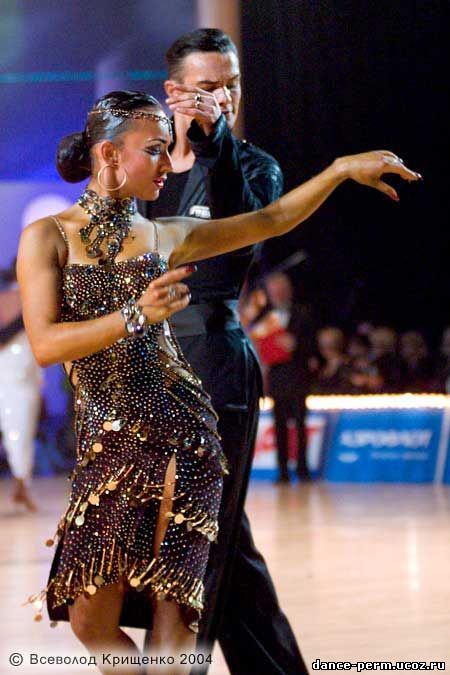 Pierre was London’s lead dance teacher in Rumba and in the 1930s his demonstration with his dance partner Doris Lavelle popularized Latin American dancing in London. Pierre and Lavelle introduced the “Cuban Rumba” which was eventually established as the official recognized version of the dance in 1955.
Pierre was London’s lead dance teacher in Rumba and in the 1930s his demonstration with his dance partner Doris Lavelle popularized Latin American dancing in London. Pierre and Lavelle introduced the “Cuban Rumba” which was eventually established as the official recognized version of the dance in 1955.
Rumba Dance Today
The ballroom style of Rumba dance is still highly popular throughout the world. It is most largely embraced as a competitive dance, and in competition-style dancing, Rumba is the slowest of the five Dancesport Latin dances. The World Dancesport Federation is the international governing body of dancesport and is recognized by the International Olympic Comimitte. It hosts national and international ballroom dance competitions featuring Rumba among other ballroom dances year round.
In competitive Rumba dancing there are two different styles: International and American. The Rumba is considered a “Latin” dance within the International dance structure and a “rhythm” dance within the American dance structure.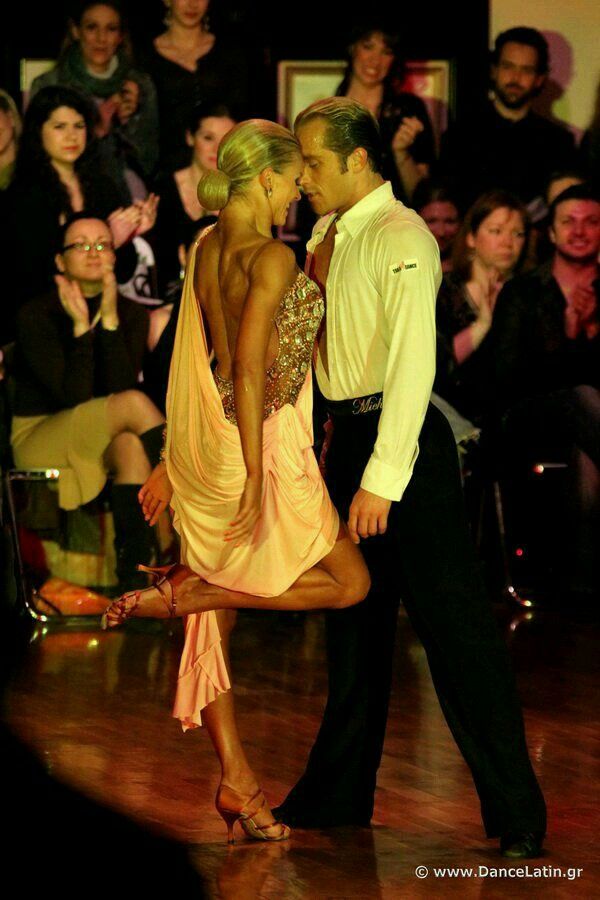 The dances are performed differently in their emphasis and their basic steps are performed on different counts. American style rumba uses counts 1, 3, and 4 while International uses counts 2, 3, and 4. The hip motion varies greatly. In the American style, the dancer steps onto a bent leg and in the international style dancer steps onto a straight leg.
The dances are performed differently in their emphasis and their basic steps are performed on different counts. American style rumba uses counts 1, 3, and 4 while International uses counts 2, 3, and 4. The hip motion varies greatly. In the American style, the dancer steps onto a bent leg and in the international style dancer steps onto a straight leg.
In addition to being danced competitively, rumba is also danced socially. In the United States Rumba is most commonly danced socially within ballroom dance studios. The Rumba is a favorite for dance instructors and new dancers alike for the forgiving slower pace of the dance’s steps and music. Rumba provides a great starting point for the foundational moves with social Latin dancing. Rumba is also a popular style for wedding couple’s first dance.
Today, the Rumba is danced to slow rhythms. The feet stay close to the floor with a sliding action and the hips move easily from side-to-side. While the dance has evolved over the years, the spirit and soul of the dance lie in Latin American music and dance. The beautiful rhythms and body expressions of the Rumba make it one of the most popular ballroom dances.
The beautiful rhythms and body expressions of the Rumba make it one of the most popular ballroom dances.
Rumba Dance Music
- “Your Body is a Wonderland” John Mayer
- “Mi Buen Amor” Gloria Estefan
- “I’m Like a Bird” Nelly Furtado
- “What’s Going On” Marvin Gaye
- “The Way You Look Tonight” Michael Bublé
- “No Me Llores” Conjunto Rumbavana
- “I’m Still Breathing” Katy Perry
- “My Best Friend” Tim McGraw
- “It Will Rain” Bruno Mars
- “The Girl from Ipanema” Bebel Gilberto
- “Lovesong” Adele
- “No Air” Jordin Sparks featuring Chris Brown
- “Savin’ Me” Nickleback
- “No One In the World” Anita Baker
- “Stickwitu” The Pussycat Dolls
- “It Must Have Been Love” Roxette
- “Take a Bow” Rihanna
- “It’s Too Late” Gloria Estefan
- “Too Little Too Late” JoJo
- “Blessed” Elton John
- “Tattoo” Jordin Sparks
- “Estar en Cuba” Mamborama
- “Corzon Aerodinamico” Estopa
- “Sway” Dean Martin
- “Surcos de Dolor” Los Chichos
- “Como Se Goza en el Bario” Johnny Almendra & Los Jovenes del Barrio
- “Entorno” Rumbantela
- “Flor D’Luna” Santana
- “I Wanna Go Home” Michael Buble
- “My Baby You” Marc Anthony
- “Do You Know” Enrique Iglesias
- “Say It Right” Nelly Furtado
- “Irreplaceable” Beyonce
- “My Love” Justin Timberlake feat.
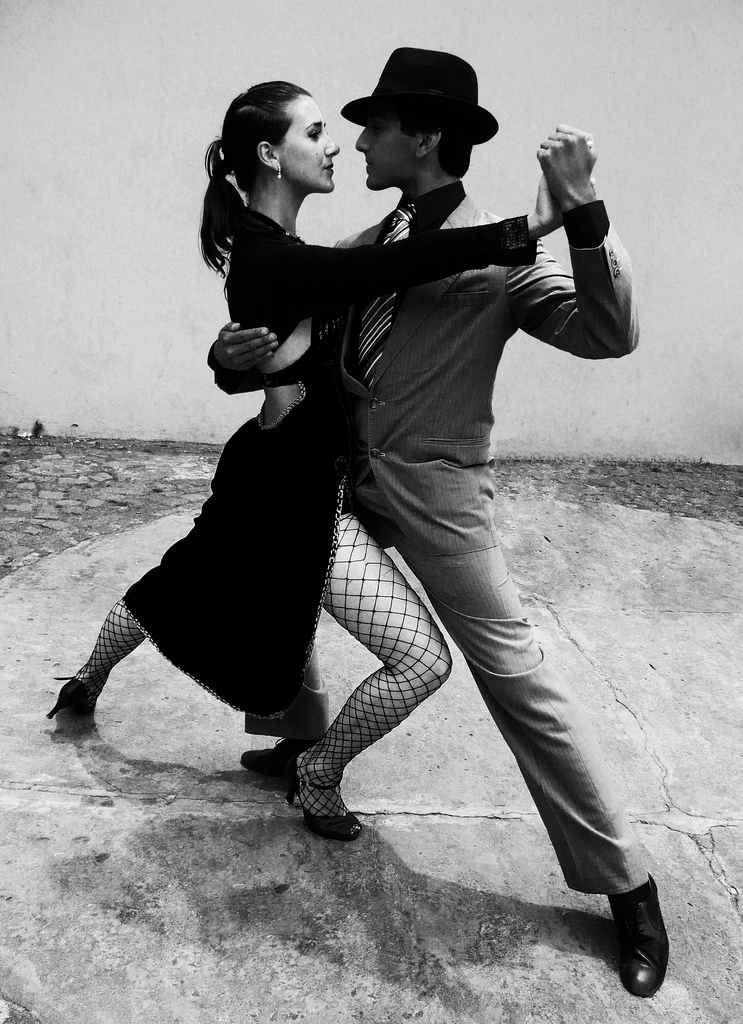 T.I.
T.I. - “Falling Into You” Celine Dion
- “It’s Now or Never” Elvis Presley
- “In The Misty Moonlight” Stevie Wonder
- “I’ll Take Care of You” Dixie Chicks
- “I Wanna Love You Forever” Jessica Simpson
- “Breathe” Faith Hill
- “Besame Mucho” Andrea Bocelli
- “And I Love Her” Paul McCartney
- “So Sick” Ne-Yo
- “Because You Loved Me” Celine Dion
- “Runaway Love” Ludacris feat. Mary J Blige
- “A Groovy Kind of Love” Dan Finnerty
- “Hate that I Love You” Rihanna feat. Ne-Yo
- “Bleeding Love” Leona Lewis
- “Break the Walls” John Secada
- “No One” Alicia Keys
Rumba dance: first steps with Denis Tagintsev
by Maria Glazyrina
in Inspiration
If love were a dance, no doubt it would be rumba. The history of the most sensual and romantic Latin American dance is mysterious and charming, just like itself. Ready to take your first steps in the world of rumba, where feelings rule? Hurry up to master the dance “language of love” together with AnySports. tv coach, Dancing with the Stars winner Denis Tagintsev!
tv coach, Dancing with the Stars winner Denis Tagintsev!
History of Rumba
Rumba originated in Cuba under the influence of rhythms brought from Africa by black slaves. The word "rumba" in Spanish means "way". Initially, the dance was performed by newlyweds, symbolizing the beginning of a life together. In it, in addition to encrypted allusions to the first sexual contact after the wedding, completely everyday motives were played out, in particular, driving a horse and crushing cockroaches.
One of the plots of the "rural rumba" - the mating games of animals - eventually acquired a more emotional form, becoming a through motif of the modern ballroom rumba. This is the story of a man who desperately wanted to win his beloved. And the girl, full of internal contradictions, then lets him closer, then suddenly breaks down and switches to another, further irritating her partner.
Music for rumba dance
The musical style of rumba was formed from the imposition of stringy Spanish melodies on sonorous African rhythms. Melodies for rumba are the slowest among the latin. Usually these are gentle, viscous songs with emotional vocals full of love languor, like Shade or Julio Iglesias.
Melodies for rumba are the slowest among the latin. Usually these are gentle, viscous songs with emotional vocals full of love languor, like Shade or Julio Iglesias.
Rumba is essentially a dance of people who are strongly attracted to each other. In a couple, dancers show passion, first reaching out to a partner, and then suddenly pushing him away. Unlike jive, the dance consists mainly in the movements of the body: the main thing here is the waves, the bends of the body, the directions of the lines of the hands, as well as the sensual look. All this forms incredibly beautiful, almost sculptural compositions, especially when the dancers freeze for a moment in poses.
on the topic:
- Passionate bachata - how to master a hot dance
- Salsa - how to learn to dance a fire dance
- The most fashionable street dances - choose your direction 00 9000 9000 9000 9000 9000 9000 rumba - the transfer of body weight to the count of "times" without taking a step - makes the dance more interesting due to accentuated stops and accelerations, the dance seems to have its own breath.
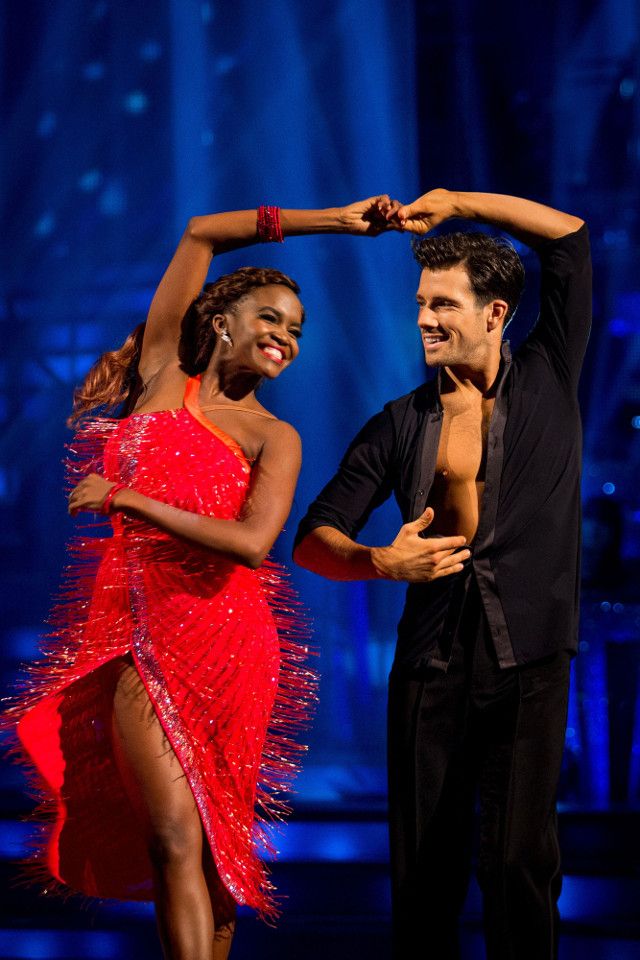
The partner most often follows the partner, trying to demonstrate himself, to conquer the partner. The girl, on the other hand, is constantly moving away somewhere, but does not cease to lure and seduce her partner. She then lets him very close, then rejects him again, thereby remaining the mistress of the situation, thanks to her charms.
Do you want to win the heart of any man? With an online dance course from Denis Tagintsev, the winner of the Dancing with the Stars project, it's easy! Learn more about the course here.
Rumba is a special event in a ballroom dancing tournament. Girls put on light, weightless dresses, turning from playful coquettes into languid and passionate femme fatales. Men, on the other hand, switch their attention from the audience to their partner - touching, chasing, feeling her every breath.
Rumba for beginners (video)
Rumba teaches not only to move beautifully, but also to express one's feelings, helps to “splash out” the accumulated love experiences on the floor in order to let them go.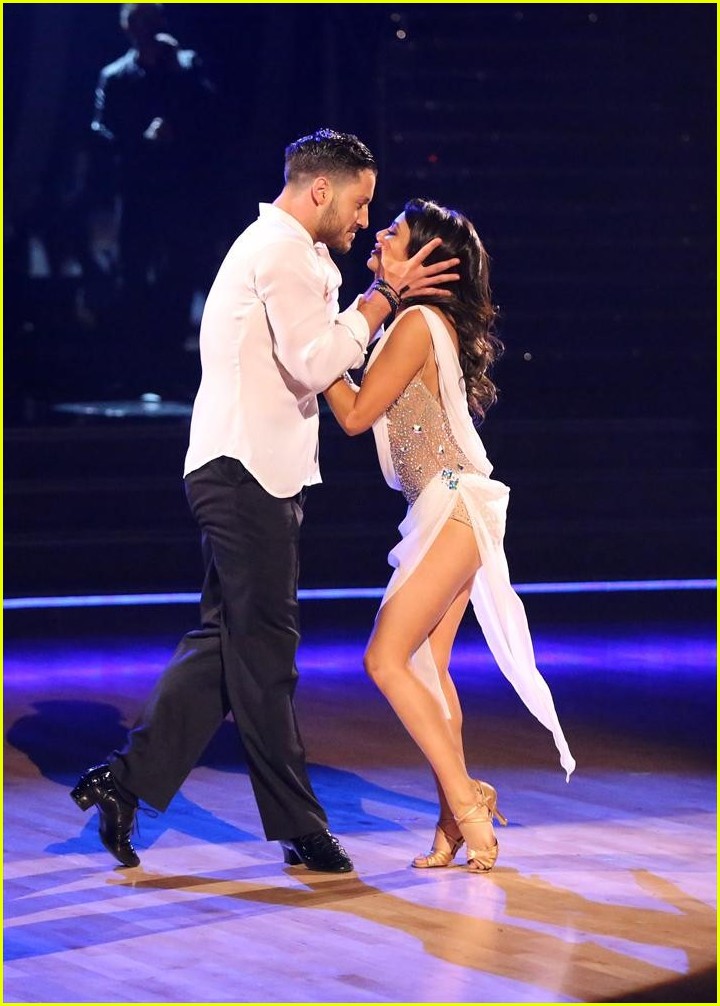 Rumba has a lot of gentle touches, looks, this dance is especially pleasant to perform with a loved one.
Rumba has a lot of gentle touches, looks, this dance is especially pleasant to perform with a loved one.
Rumba choreography goes well with almost any slow song and can be danced even at a friends wedding, at a party or on the dance floor in the park.
Learn the basic rumba steps - a video lesson led by Denis Tagintsev will help you with this! And most importantly - fill every movement with your own emotions.
Photo: bigstock.com
inspirationdancing
Share with your friends
Do you like our articles? Subscribe to the digest from AnySports!
See also
Load more
Rumba dance
Rumba dance history
Rumba is a dance of African blacks brought to Cuba at the end of the last century.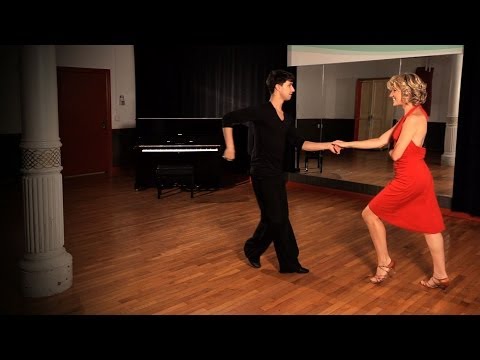 The dance emphasizes the movements of the body, not the legs. Complex, overlapping rhythms, tapped by pots, spoons, bottles... were more important to the dance than the melody. Rumba appeared in Havana at 19th century in combination with the European Contradanza. The name "Rumba" probably comes from the name of the dance groups in 1807 - "rumboso orquestra", although in Spain the word "rumbo" means "way" (in Russian, the marine analogue is "rumba", that is, direction), and "rumba " is "a heap is small" and "rhum" is a type of liquor popular in the Caribbean, any of which could be used to describe this dance. The original meaning of the name, in my opinion, is "the way of the soul". The dance has two sources - Spanish and African: Spanish melodies and African rhythms. Although the basis of the dance is Cuban, many movements originated in other Caribbean islands and in Latin America in general. Initially, rumba is a sexual pantomime performed in a fast rhythm with exaggerated movements of the hips in the nature of sexual aggressive harassment by a man and protective movements by a woman.
The dance emphasizes the movements of the body, not the legs. Complex, overlapping rhythms, tapped by pots, spoons, bottles... were more important to the dance than the melody. Rumba appeared in Havana at 19th century in combination with the European Contradanza. The name "Rumba" probably comes from the name of the dance groups in 1807 - "rumboso orquestra", although in Spain the word "rumbo" means "way" (in Russian, the marine analogue is "rumba", that is, direction), and "rumba " is "a heap is small" and "rhum" is a type of liquor popular in the Caribbean, any of which could be used to describe this dance. The original meaning of the name, in my opinion, is "the way of the soul". The dance has two sources - Spanish and African: Spanish melodies and African rhythms. Although the basis of the dance is Cuban, many movements originated in other Caribbean islands and in Latin America in general. Initially, rumba is a sexual pantomime performed in a fast rhythm with exaggerated movements of the hips in the nature of sexual aggressive harassment by a man and protective movements by a woman. Accompanying musical instruments are maracas, claves, marimbola, and drums. The rural form of rumba in Cuba is a kind of mating dance of domestic animals, more of a performance than a dance.
Accompanying musical instruments are maracas, claves, marimbola, and drums. The rural form of rumba in Cuba is a kind of mating dance of domestic animals, more of a performance than a dance.
The movement of the shoulders and contraction of the sides in the dance are the movements of slaves under a heavy load in their hands. The movement "Cucaracha" (cucaracha) is an imitation of crushing cockroaches. Spot-turn ("Spot Turn") in the Cuban village daringly danced around the rim of the cart wheel! The popular rumba tune "La Paloma" has been known in Cuba since 1866. A variant of the rumba, similar to that danced today, appeared in the US in the 1930s, as a combination of this rural rumba with Guaracha, Cuban Bolero (no relation to the Spanish Bolero), later Son and Danzon were added. After the First World War came the "Son" dance, a dance of the Cuban middle class, with a slower rhythm and more decent movements. Even slower - "Danzon", a dance of a wealthy, respectable Cuban society with very small steps, when the partners almost do not move their hips, but carefully bend and unbend their legs, showing their harmony, grace and length.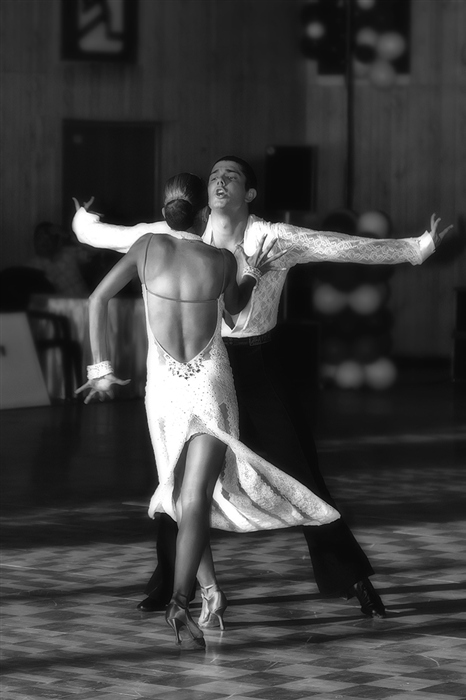
American Rumba is a modified version of the "Son" dance. The first serious attempt to popularize rumba in the US was in 1913 (Lew Quinn and Joan Sawyer). Ten years later, the bandleader Emile Coleman specifically invited rumba players and a couple of rumba dancers. In 1925 Benito Collada opened the El Chico Greenwich Club. It turned out that no one in New York can dance the rumba yet!
Real interest in Latin music began around 1929. In the late 1920s, Xavier Cugat formed an orchestra that played only Latin American music at the Coconut Grove in Los Angeles and played in early sound films such as "In Gay Madrid". Later at 19In the 30s, Cugat played at the Waldorf Astoria Hotel in New York. By the end of the decade, his orchestra was recognized as the best Latin American orchestra of the decade. In 1935, George Raft played the role of a suave dancer in Rumba, the first film in which the hero is rewarded with the heroine because of their shared love of dancing. After 52 years - the film "Dirty Dancing", when an experienced teacher seduces a beginner, then "Strictly Ballroom" with a similar plot, and two films with reverse plots, when partners are almost beginners - "Dance with me" 98 years and "Let''s it be me". In Europe, the rumba came about thanks to the enthusiasm and brilliant interpretations of Pierre Lavelle, the leading English teacher of Latin American dance. He visited Havana in 1947, it turned out that the rumba in Cuba is performed with an emphasis on the count of "two", and not on "one", as in the American rumba. This technique, with the names of the main figures received from Pepe Rivera from Havana, he began to teach in England. In the 1950s, he and his partner and wife Doris Lavelle performed extensively with demonstrations and Latin dance lessons in London.
In Europe, the rumba came about thanks to the enthusiasm and brilliant interpretations of Pierre Lavelle, the leading English teacher of Latin American dance. He visited Havana in 1947, it turned out that the rumba in Cuba is performed with an emphasis on the count of "two", and not on "one", as in the American rumba. This technique, with the names of the main figures received from Pepe Rivera from Havana, he began to teach in England. In the 1950s, he and his partner and wife Doris Lavelle performed extensively with demonstrations and Latin dance lessons in London.
With the innovation of only shifting the weight to the "one" count, without the actual step, the dance took on a very sensual and romantic character. The count "one" is the strongest count in rumba, without taking a step on this count, we emphasize the active movement of the hips with music. Together with the slow tempo of the music and the musical emphasis on the work of the hips, the dance takes on a lyrical and erotic character.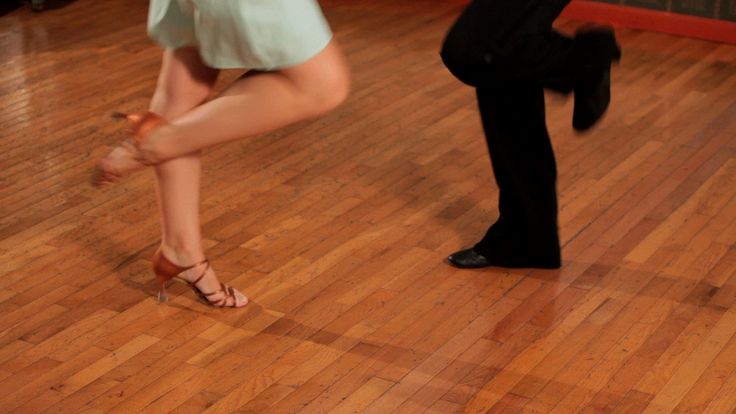 Steps are taken on counts of 2, 3 and 4. The knees are straightened and bent at each step, turns are made between counts. The weight of the body is in front, all steps are taken from the toe. Pierre Lavelle introduced the true "Cuban Rumba", which, after much debate, was officially recognized and standardized in 1955. In modern dance, many of the main figures carry the old story of a woman's attempt to dominate a man with feminine charm. During the dance, there is always an element when the partner teases the partner and then runs away, the man is first seduced, and then the partner leaves him and strives for another. To another partner, judge, spectator... To the passionate erotic movements of the partner, the partner, through the response movements, expresses a desire to possess her, tries to prove his masculinity through physical dominance, but, alas, usually achieves nothing. Rumba is the spirit and soul of Latin American music and dance. The enchanting rhythms and body movements make the rumba one of the most popular ballroom dances, and many partners consider this dance to be their favorite.
Steps are taken on counts of 2, 3 and 4. The knees are straightened and bent at each step, turns are made between counts. The weight of the body is in front, all steps are taken from the toe. Pierre Lavelle introduced the true "Cuban Rumba", which, after much debate, was officially recognized and standardized in 1955. In modern dance, many of the main figures carry the old story of a woman's attempt to dominate a man with feminine charm. During the dance, there is always an element when the partner teases the partner and then runs away, the man is first seduced, and then the partner leaves him and strives for another. To another partner, judge, spectator... To the passionate erotic movements of the partner, the partner, through the response movements, expresses a desire to possess her, tries to prove his masculinity through physical dominance, but, alas, usually achieves nothing. Rumba is the spirit and soul of Latin American music and dance. The enchanting rhythms and body movements make the rumba one of the most popular ballroom dances, and many partners consider this dance to be their favorite.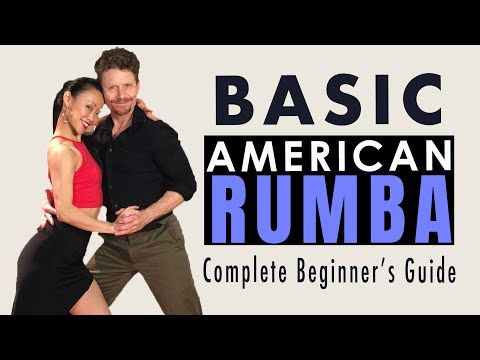
Characteristics of the Rumba:
Movement: On the spot, Smooth, Continued with accents, Sliding.
Time signature: 4/4
Beats per minute: 27-31
Accent: 1 and 3 (1 stronger) beat.
Competition: 1.5 - 2 minutes
Slow, pulsating rhythm, romantic music - that's what helps rumba not to age and always be in fashion. The story told by the partner in the rubme has absorbed the features characteristic of a Latin American man in love - strength and confidence, sensuality and the desire to please a woman. The intense rhythm of the dance is reminiscent of the eternal drama of love, when one finds it and the other loses it forever. However, one should not think that rumba is primarily intended for a male partner.
The partner plays her own and very important role in this dance. She teases her partner, captivates, seduces him in order to reject him later. If tango is passion, then rumba is undoubtedly a love story. Rumba is magnificent from its very first movements and is filled with restrained power and feelings, which are brought out by an exquisite rhythm - simple and romantic, with exciting sounds of guajira, like a distant echo, in the background.
At times it seems that while dancing the rumba, the partners look into the eyes not of each other, but of fate itself.
The "international" style of rumba owes much of its content to the Cuban guajira, an old folk dance whose name gave the wooden musical instrument its name. Many elements of guajira passed into rumba almost in their original form.
The most famous rumba melody in the world must obviously be the famous "Guantanamera", written by Joséito Fernandez and quickly becoming a rumba classic. In Cuba, the verb "rumbare" simply means "to dance" and is therefore applied to a whole range of dances, and sometimes means a dance party as such. In the Spanish-speaking world, the rumba is also called the "bolero-rumba".
There is also a “square rumba”, which is distinguished by tighter positions and fluid movements. Rumba appeared in this form in the early 1930s. In the late 1940s, rumba became known in Europe and the United States, where it was often called the Cuban rumba.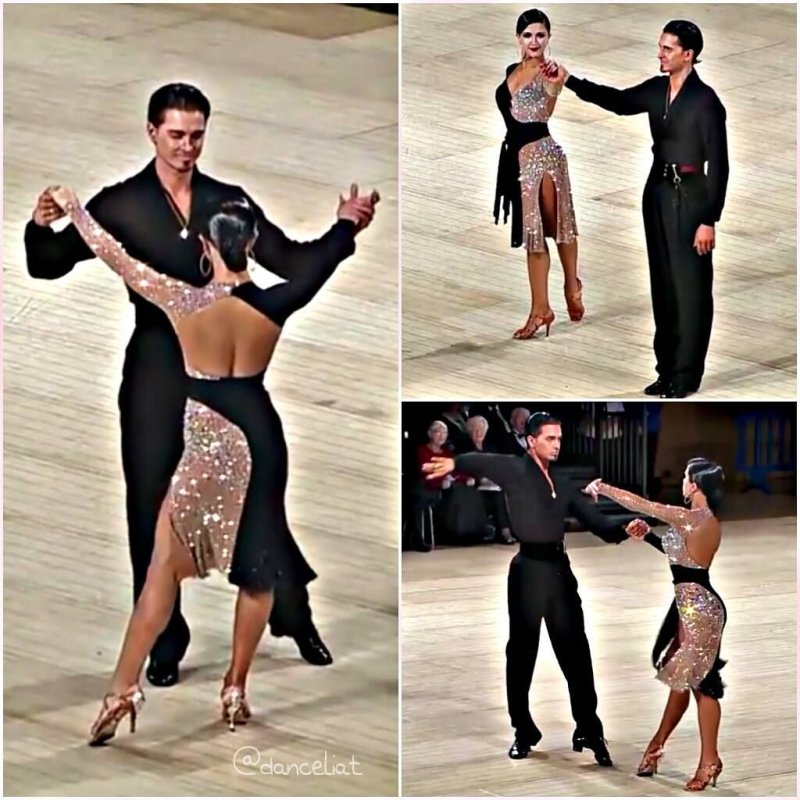 In order to make it more meaningful and dynamic, open positions have been increasingly used in it, which is why the rumba has become even more saturated. By the early 1990s, the international style of rumba had taken on new heights thanks to the magnificent performances of 13-time world champions in international Latin American dance, Dony Burns and Gaynor Fairweather from the UK.
In order to make it more meaningful and dynamic, open positions have been increasingly used in it, which is why the rumba has become even more saturated. By the early 1990s, the international style of rumba had taken on new heights thanks to the magnificent performances of 13-time world champions in international Latin American dance, Dony Burns and Gaynor Fairweather from the UK.
It must be admitted that those people who live in Havana and dance, as before, in its bars, can hardly recognize their familiar rumba in the dance of the same name, which is performed on the professional stage. On the other hand, more and more tourists visit the homeland of the rumba, and if there are dance lovers among them, they cannot fail to take note of what the native Latin Americans are rightly proud of in their dances - the simplicity and purity of the rumba lines. After all, in the end, all Latin American dances speak of love, and for any of them you need very little - a man, a woman and beautiful music.




